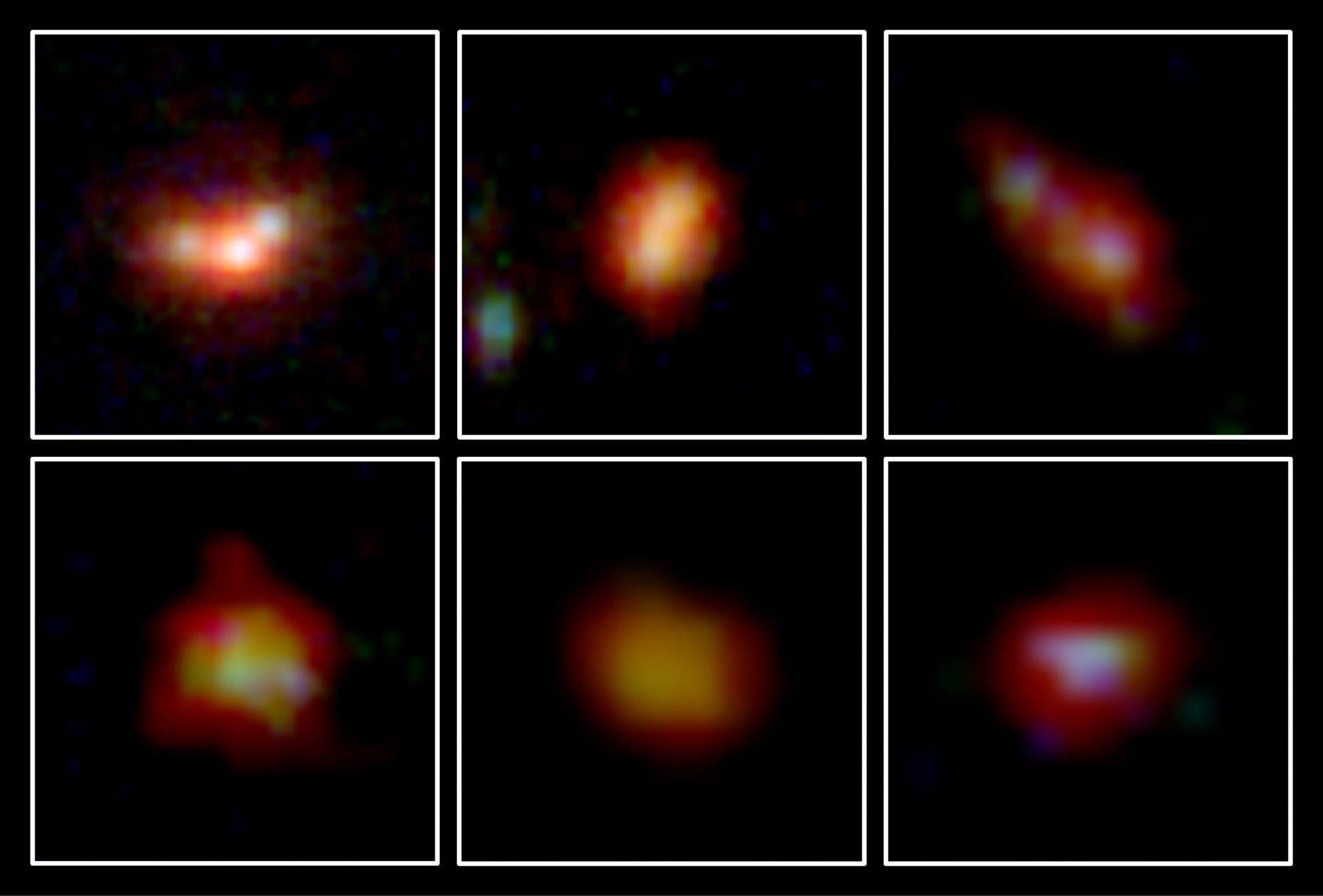Researchers have determined the amount of oxygen present in the early universe by utilizing recently acquired data from the James Webb Space Telescope.

JWST infrared images of six galaxies from 500–700 million years after the birth of the universe. All six have low oxygen abundances compared to modern galaxies. Image Credit: NASA, ESA, CSA, K. Nakajima et al.
The results, which have been accepted for publication in The Astrophysical Journal Supplement Series and uploaded to the arXiv preprint server, demonstrate that within 500–700 million years of the universe’s creation, the amount of oxygen in galaxies increased significantly and has remained as abundant as that of modern galaxies ever since. The fact that oxygen appeared so early suggests that the ingredients required for life existed earlier than believed.
There were only light elements in the early universe, right after the Big Bang, like lithium, helium, and hydrogen. Subsequently, heavier elements like oxygen were created by nuclear fusion processes in stars and spread throughout galaxies, mostly as a result of supernova explosions.
The various elements that make up the earth and the living organisms were created by this continuous process of element synthesis that took place over the enormous arc of cosmic history.
Using information from the James Webb Space Telescope (JWST), a research team at the National Astronomical Observatory of Japan under the direction of Kimihiko Nakajima measured the oxygen content of 138 galaxies that existed during the first two billion years of the universe.
The majority of the galaxies, the study discovered, had oxygen abundances similar to those of contemporary galaxies. However, six of the sample’s seven oldest galaxies—those that formed when the universe was only 500–700 million years old—had around half the expected amount of oxygen.
Astronomers were not prepared for this sudden spike in oxygen levels. This raises the potential that life may have arisen earlier than previously believed if the essential components, such as oxygen, had already been present in the early universe.
Journal Reference
Nakajima, K., et al. (2023) JWST Census for the Mass-Metallicity Star-Formation Relations at z=4-10 with the Self-Consistent Flux Calibration and the Proper Metallicity Calibrators. The Astrophysical Journal Supplement Series. doi:10.3847/1538-4365/acd556.